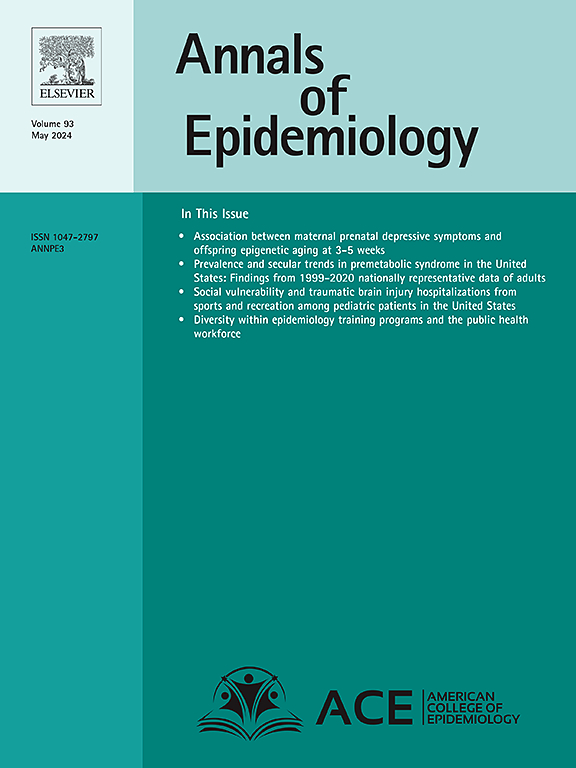利用局部估计的散点图平滑(黄土)回归估计乳腺癌患者纵向队列中的缺失权值。
IF 3.3
3区 医学
Q1 PUBLIC, ENVIRONMENTAL & OCCUPATIONAL HEALTH
引用次数: 0
摘要
处理丢失数据的传统方法依赖于对丢失数据模式的假设。局部估计的散点图平滑(黄土)回归模型作为数据驱动的选择,以尽量减少乳腺癌患者纵向队列中缺失的体重数据。方法:从Kaiser Permanente 2005-2013年诊断为浸润性乳腺癌的10778名女性的电子健康记录中提取乳腺癌诊断前2年至10年后的门诊体重。黄土回归模型估计基线(乳腺癌诊断)和6个随访时间点(基线后6、12、24、48、72和96个月)的权重。将黄土模型确定的权重与最近可用法确定的权重进行比较,该方法在指定的时间窗内选择最接近每个时间点的权重测量值。结果:与最接近可用方法相比,黄土模型在基线和6个月后识别的权重较少,但在后续随访期间识别的权重显著增加。在所有时间点,两种方法确定的重量中,超过80%的重量相差不超过2.50公斤。结论:黄土回归有效地利用了现有的纵向数据,可能是未来基于电子病历的研究中减少纵向数据缺失的有益工具。本文章由计算机程序翻译,如有差异,请以英文原文为准。
Utilization of locally estimated scatterplot smoothing (LOESS) regression to estimate missing weights in a longitudinal cohort of breast cancer patients
Introduction
Traditional methods to handle missing data rely on making assumptions about missing data patterns. Locally estimated scatterplot smoothing (LOESS) regression models were explored as a data-driven option to minimize missing weight data in a longitudinal cohort of breast cancer patients.
Methods
Outpatient weights from 2 years prior to breast cancer diagnosis to 10 years post were extracted from electronic health records for 10,778 women with invasive breast cancer diagnosed from 2005‐2013 at Kaiser Permanente. LOESS regression models estimated weights at baseline (breast cancer diagnosis) and 6 follow-up time points (6, 12, 24, 48, 72, and 96 months post-baseline). The weights identified by the LOESS models were compared with those identified by the closest-available method, in which the weight measurement closest to each timepoint within a specified time window was selected.
Results
Compared with the closest-available method, LOESS models identified fewer weights at baseline and 6 months post, but significantly more weights at later follow-up periods. At all timepoints, more than 80% of the weights identified by both approaches differed by 2.50 kilograms or less.
Conclusions
LOESS regression makes effective use of available longitudinal data and may be a beneficial tool to minimize missing longitudinal data in future EHR-based studies.
求助全文
通过发布文献求助,成功后即可免费获取论文全文。
去求助
来源期刊

Annals of Epidemiology
医学-公共卫生、环境卫生与职业卫生
CiteScore
7.40
自引率
1.80%
发文量
207
审稿时长
59 days
期刊介绍:
The journal emphasizes the application of epidemiologic methods to issues that affect the distribution and determinants of human illness in diverse contexts. Its primary focus is on chronic and acute conditions of diverse etiologies and of major importance to clinical medicine, public health, and health care delivery.
 求助内容:
求助内容: 应助结果提醒方式:
应助结果提醒方式:


